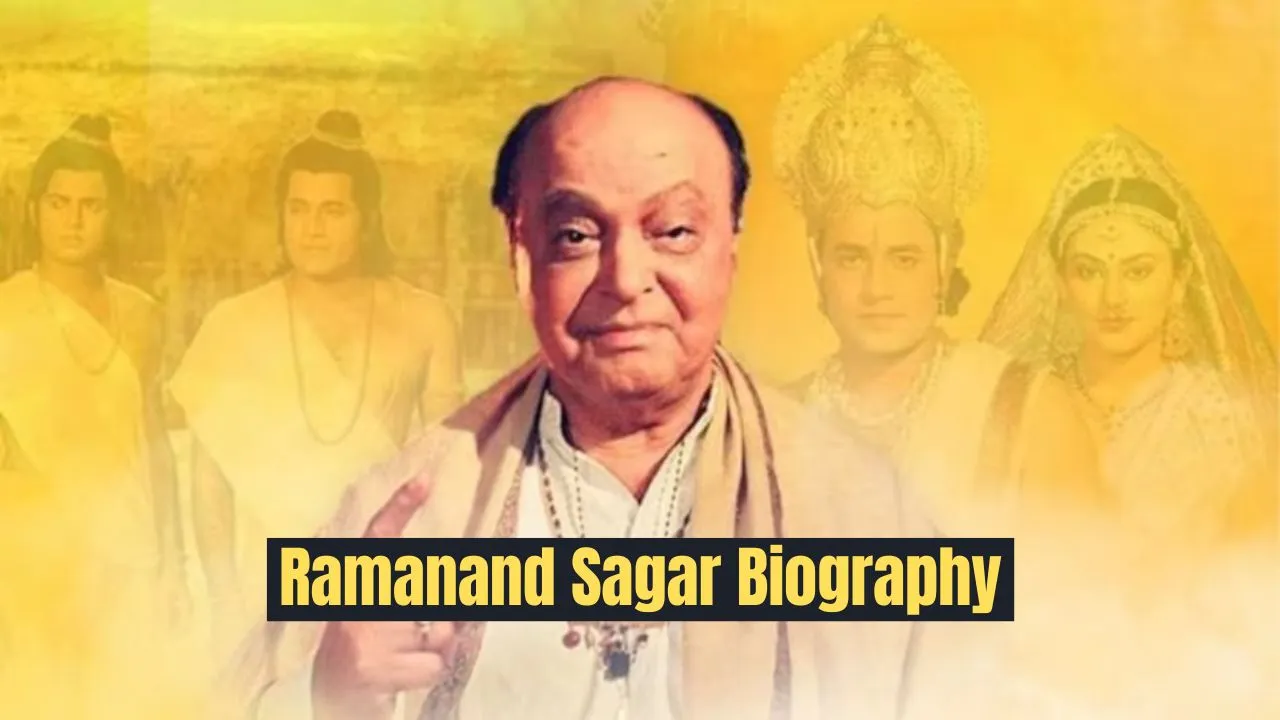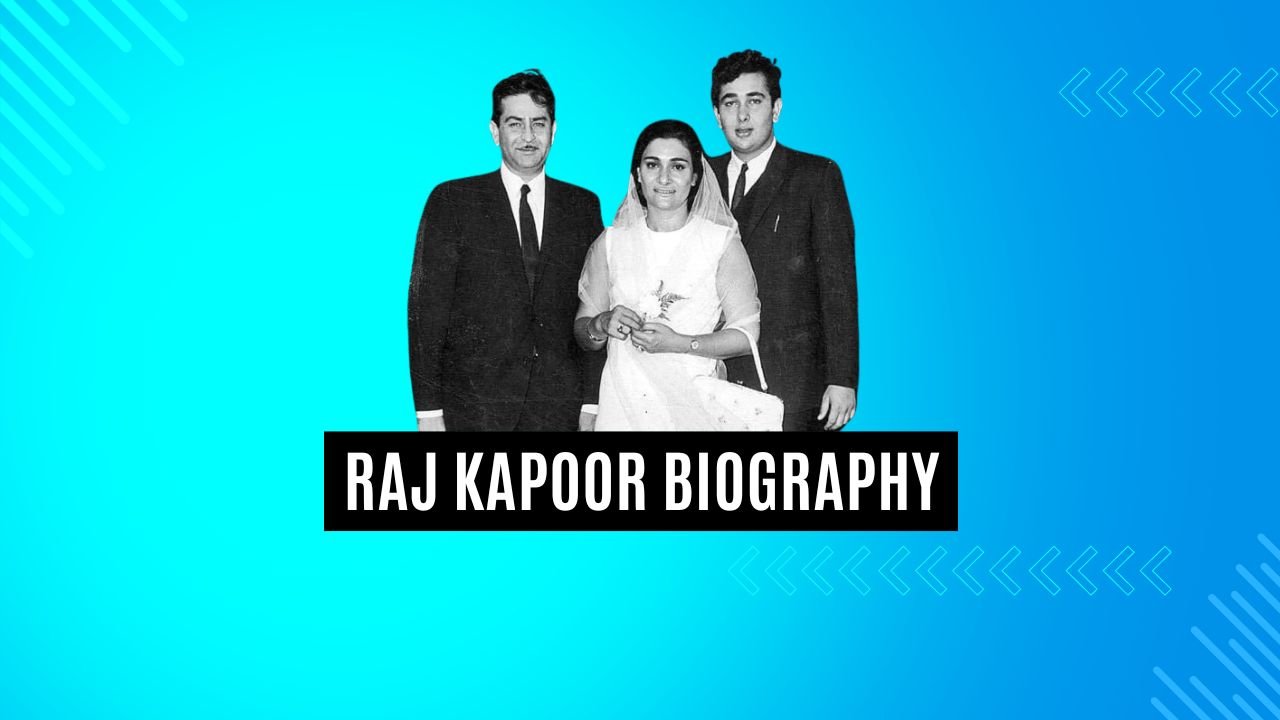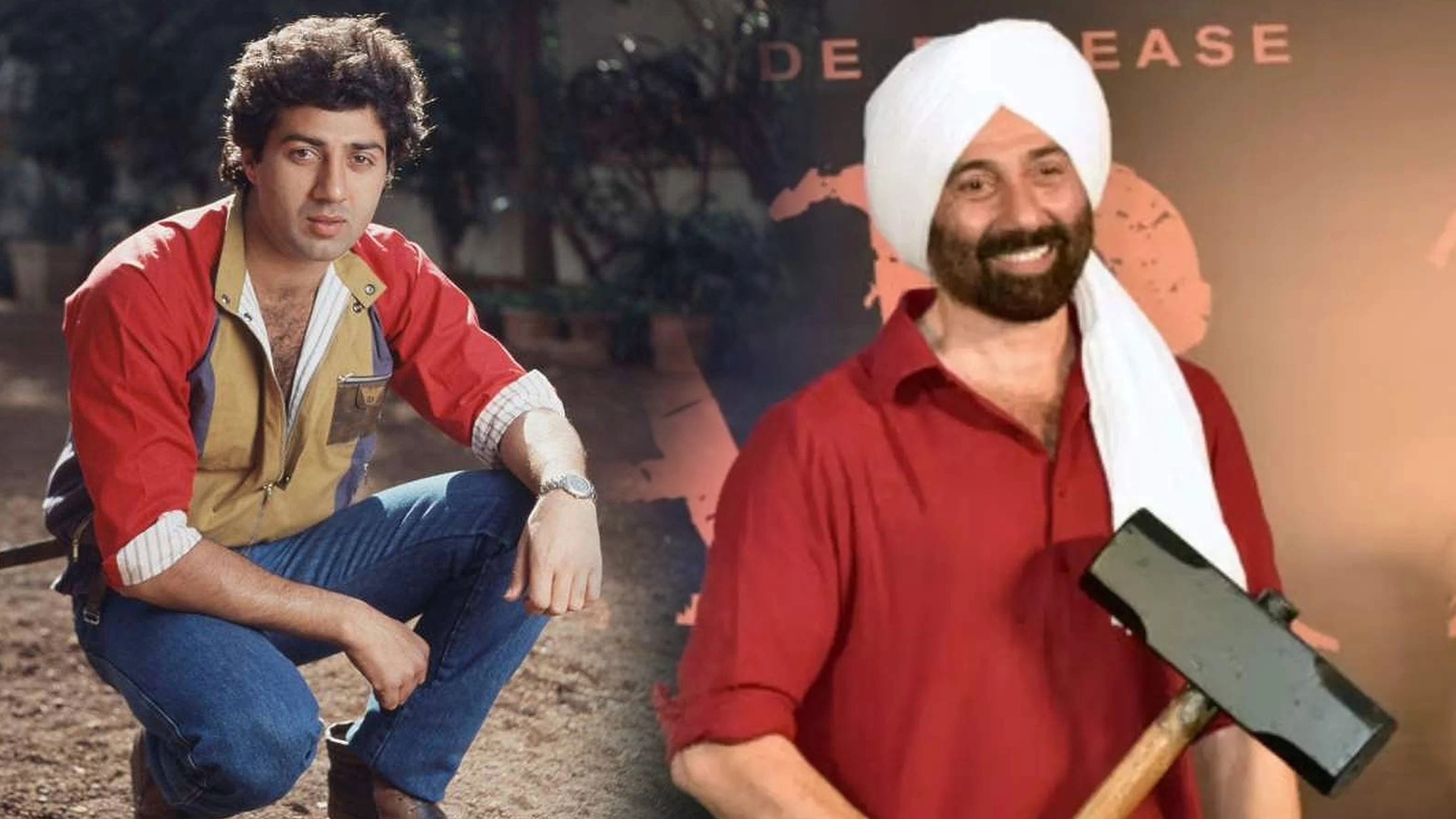Ramanand Sagar Biography: In the vast tapestry of Indian cinema and television, there exists a luminary whose name is synonymous with mythological epics, timeless storytelling, and spiritual enlightenment. Ramanand Sagar, the visionary producer and director, is a towering figure whose contributions have left an indelible mark on the landscape of Indian entertainment. From epic mythological sagas to thought-provoking social dramas, Sagar’s legacy continues to inspire and captivate audiences across generations.
Early Life and Career Beginnings:
Ramanand Sagar was born on December 29, 1917, in Lahore, British India (now in Pakistan), into a family with a rich literary and cultural heritage. Raised in an environment steeped in spirituality and storytelling, Sagar developed a deep appreciation for Indian mythology and folklore from a young age. It was this early exposure to the rich tapestry of Indian culture that would shape his destiny as a filmmaker and storyteller.
After completing his education, Sagar ventured into the world of cinema, determined to bring the timeless stories of Indian mythology to life on the silver screen. His early years in the industry were marked by struggles and setbacks, as he faced the challenges of breaking into a fiercely competitive industry dominated by established studios and filmmakers. However, Sagar’s unwavering determination and passion for storytelling eventually led him to find success in the world of cinema.
Rise to Prominence:
Ramanand Sagar’s breakthrough came in 1957 with the release of “Aurat,” a social drama that explored the themes of women’s empowerment and gender equality. The film, which starred the legendary actress Meena Kumari in the lead role, was a critical and commercial success, establishing Sagar as a promising new talent in the industry. However, it was his subsequent forays into the realm of television that would catapult him to superstardom and cement his legacy as a master storyteller.
In 1987, Sagar created history with the launch of “Ramayan,” a groundbreaking television series that brought the epic story of Lord Rama to millions of households across India. The series, which aired on Doordarshan, became an instant sensation, capturing the hearts and minds of audiences with its powerful performances, stunning visuals, and soul-stirring music. “Ramayan” not only redefined the landscape of Indian television but also became a cultural phenomenon, sparking a nationwide revival of interest in Hindu mythology and spirituality.
The Era of Mythological Epics:
Buoyed by the success of “Ramayan,” Ramanand Sagar continued to explore the rich tapestry of Indian mythology with a series of epic television dramas that captured the imagination of audiences worldwide. From “Krishna” to “Shri Krishna” and “Vikram Aur Betaal,” Sagar’s mythological sagas showcased his mastery over storytelling and his ability to transport audiences into the mystical world of gods, goddesses, and demons.
One of the hallmarks of Sagar’s mythological epics was his meticulous attention to detail and historical accuracy. From elaborate sets and costumes to authentic dialogue and rituals, Sagar spared no expense in recreating the grandeur and majesty of ancient India on screen. His dedication to authenticity and his unwavering commitment to staying true to the spirit of the original texts earned him widespread acclaim and admiration from audiences and critics alike.
Controversies and Challenges:
Despite his unparalleled success, Ramanand Sagar was not immune to controversy and challenges throughout his career. In 1997, his television series “Ramayan” sparked controversy for its portrayal of certain characters and events from the epic. Some critics accused Sagar of taking creative liberties with the source material and distorting the traditional narrative to suit his own agenda. However, Sagar defended his creative choices, stating that his intention was to present the timeless story of Lord Rama in a way that would resonate with modern audiences.
In addition to controversy, Sagar also faced financial challenges and production woes on several occasions. The ambitious scale of his television projects often strained the budgets and resources of his production company, leading to delays and cost overruns. However, Sagar’s unwavering determination and his ability to overcome adversity ensured that his vision would be realized on screen, captivating audiences with its grandeur and spectacle.
Awards and Accolades:
Ramanand Sagar’s contributions to Indian television have been recognized with numerous awards and accolades throughout his illustrious career. “Ramayan” earned him several prestigious awards, including the National Film Award for Best Direction and the Screen Award for Best Director. In addition to his national honors, Sagar was also the recipient of several international awards, including the UNESCO Award for Best Television Serial.
One of the crowning achievements of Ramanand Sagar’s career came in 2000 when he was honored with the Padma Vibhushan, India’s second-highest civilian award, in recognition of his outstanding contributions to the arts. The award, conferred by the Government of India, was a testament to Sagar’s enduring legacy as a visionary filmmaker and storyteller whose work continues to inspire and captivate audiences around the world.
Legacy:
As we reflect on the illustrious career of Ramanand Sagar, it becomes evident that his legacy extends far beyond the confines of the television screen. He is not just a filmmaker but a visionary whose work has left an indelible mark on the cultural landscape of India. His mythological epics have not only entertained audiences but also served as a source of inspiration and spiritual enlightenment for millions of viewers around the world.
As we celebrate Ramanand Sagar’s contributions to Indian television, let us remember him as a pioneer whose vision and creativity continue to resonate with audiences today. His dedication to his craft, his commitment to authenticity, and his unwavering passion for storytelling have enriched the lives of countless people and ensured that his legacy will endure for generations to come. Ramanand Sagar may have left this world, but his spirit lives on through the timeless stories he has left behind, reminding us of the power of myth and the enduring appeal of the human imagination.



